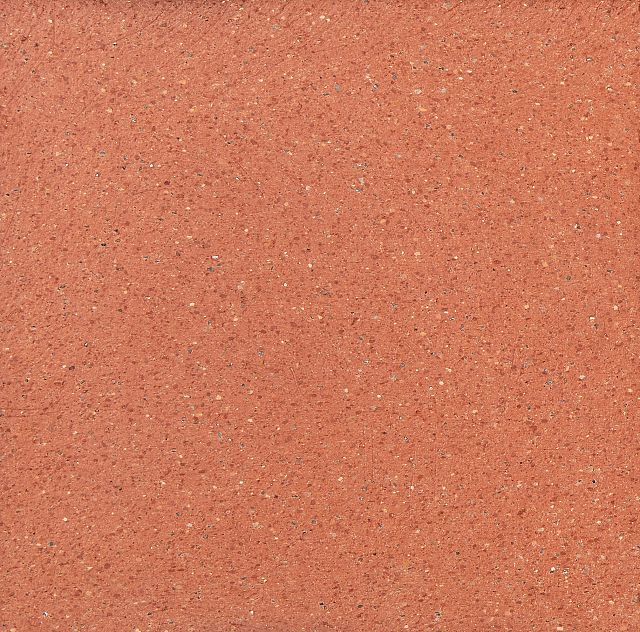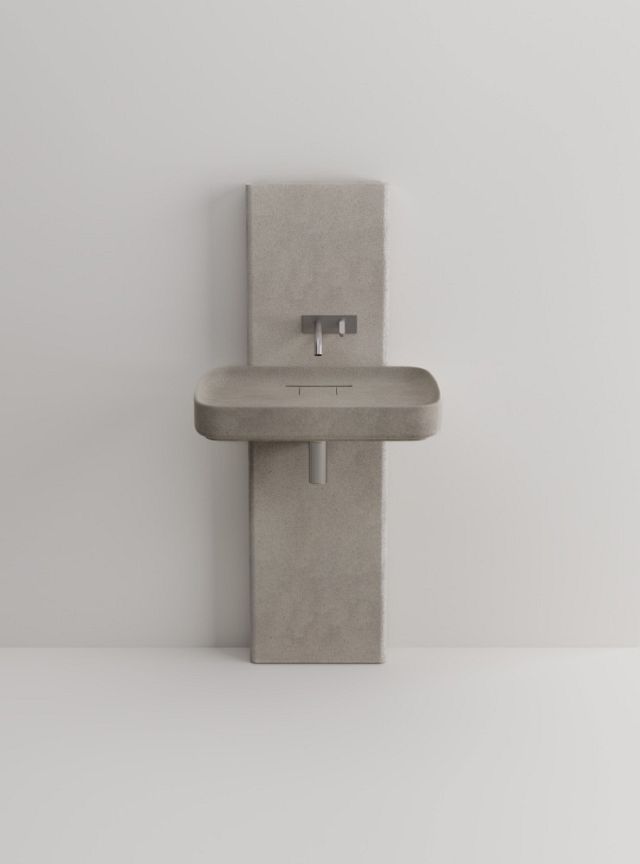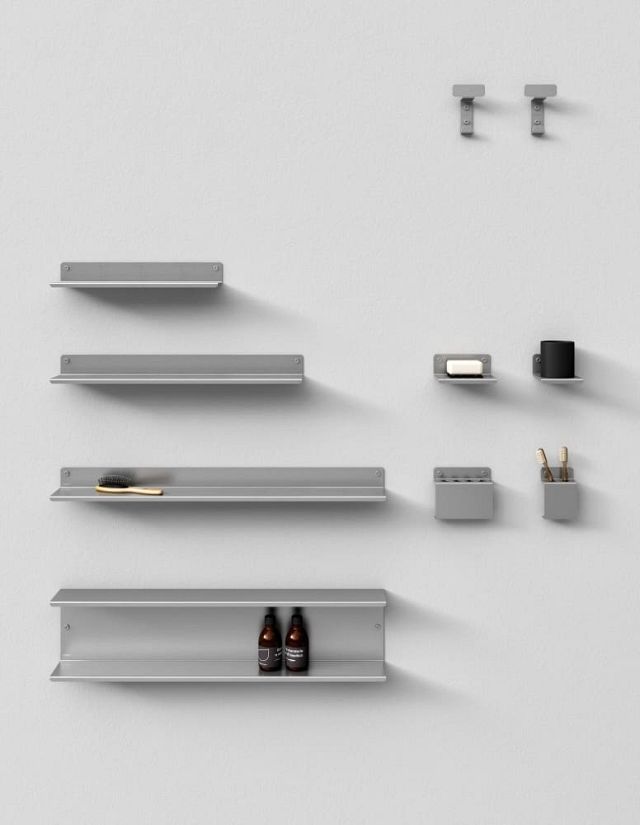Burnt Earth Beach House represents architect John Wardle’s enduring love of terracotta, his fascination with ceramics and his working knowledge of the making of ceramics and firing of bricks. Discover how John’s relationship with Italian craftsmanship and the makers of Cotto Manetti have been foundational to the design of this home-away-from-home.
Products
Burnt Earth Beach House, located in Anglesea on the coast of Victoria, is architect John Wardle’s second home, designed for his multiplying family. John himself speaks of his many summers in this seaside town as a child. His connection to that place stretches from his own childhood into that of the Burnt Earth Beach House – a family retreat for himself, his children, and their children in turn.
John’s intimate knowledge of the site has informed the design of this home, responding to the movement of light across the site throughout the day, while also capturing the best aspects of ocean and surrounding bush. In designing Burnt Earth Beach House (an Australianised play on words that alludes to ‘baked earth’), John worked closely with Tuscan terracotta maestros, Cotto Manetti (or Manetti for short), for primary parts of the interior (flooring, joinery and surfaces). John also worked with Australian brand Krause Bricks for the home’s distinct ‘torn brick’ exterior and the internal walls, with credit to builders Spence Construction.

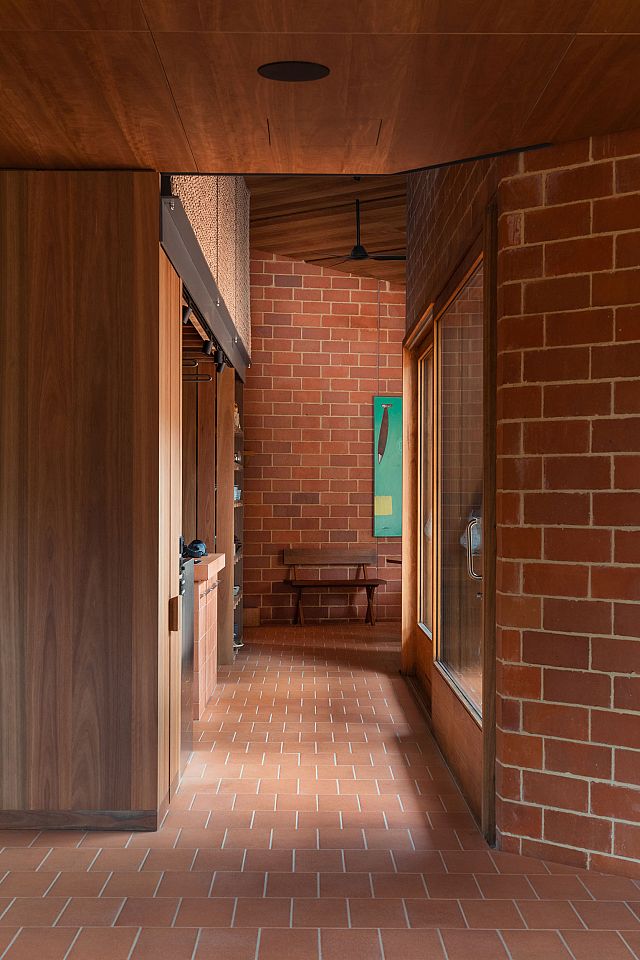
John speaks of the deep friendship formed with Federico Manetti of Cotto Manetti, and his experience of working with Federico to harness the remarkable knowledge contained within the family business and that specific Tuscan region. Manetti is renowned for its quality terracotta tiles and custom terracotta designs – all of which span eight generations of specialist knowledge and terracotta artisanship.


For the kitchen John has used Manetti’s Arrotato Da Crudo extruded terracotta tiles. The tiles are extruded yet every piece remains unique, and pure in their composition of Galestro clay sourced from Impruneta, as well as local water and fire. After each tile dries, it is mechanically brushed to achieve a soft yet artisanal feeling, (the subtle brushstrokes can be seen in the finish of the tiles across the floors). After brushing, the tiles go through firing and then soak in water to make them extra robust. “… It really looks like a handmade tile,” John comments. “They’re quite beautiful and there are very, very slight variants across the floor where they appear like baked earth, which is what terracotta is.”
In contrast to the more rustic finishes of the Arrotato Da Crudo tiles, are the Machined Flat Satinato Tiles which are quite refined and elegant – thanks to a special polishing process applied after firing. Together the two tiles make for a beautiful, contrasting combination.

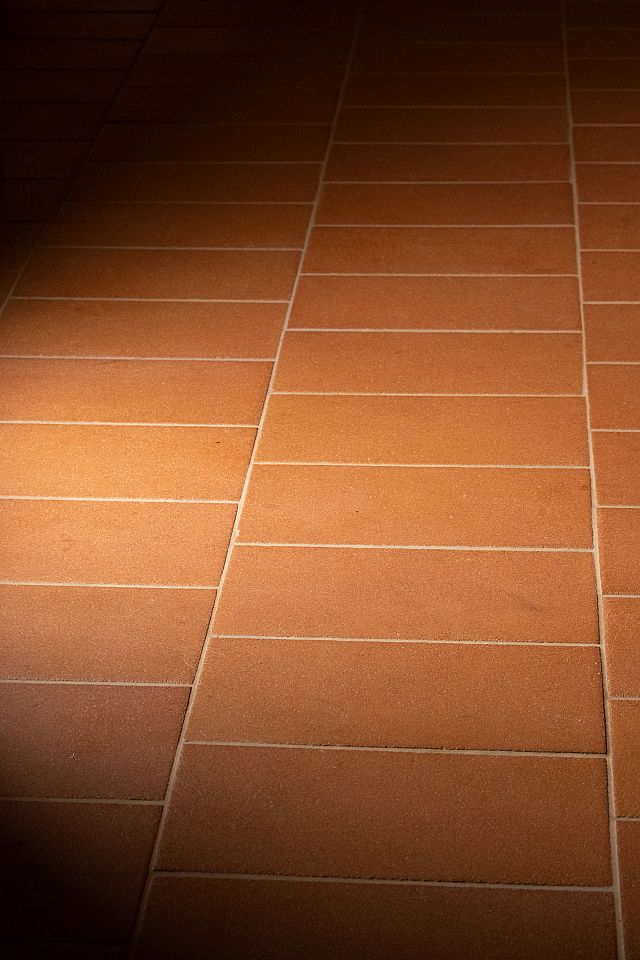
The collaboration with Manetti continues into the main bedroom’s ensuite bathroom. Here a handmade bathtub – designed for deep soaking – commands the space. This bathtub was made especially for this particular bathroom and in terracotta, hand-coiled by one of Manetti’s master craftspeople in Tuscany. As Artedomus’ Melbourne Senior Business Development Manager, William Pearse, points out: “Just a few people in the world know this technique, which involves a gradual layering to build up the piece. So, the artisan goes around the element every day attaching one more layer of clay, as each layer dries a new layer is added. The bathtub has then been fired and glazed on its internal surface.”
For John, the bathtub is a symbol of collaborative spirit and the concessions that each side must make in the creative process: “I just love the story of it. It’s such a quirky, wonderful thing. Completely unexpected, not as planned. But it’s a very immersive bath. You can sink very deeply into it.”

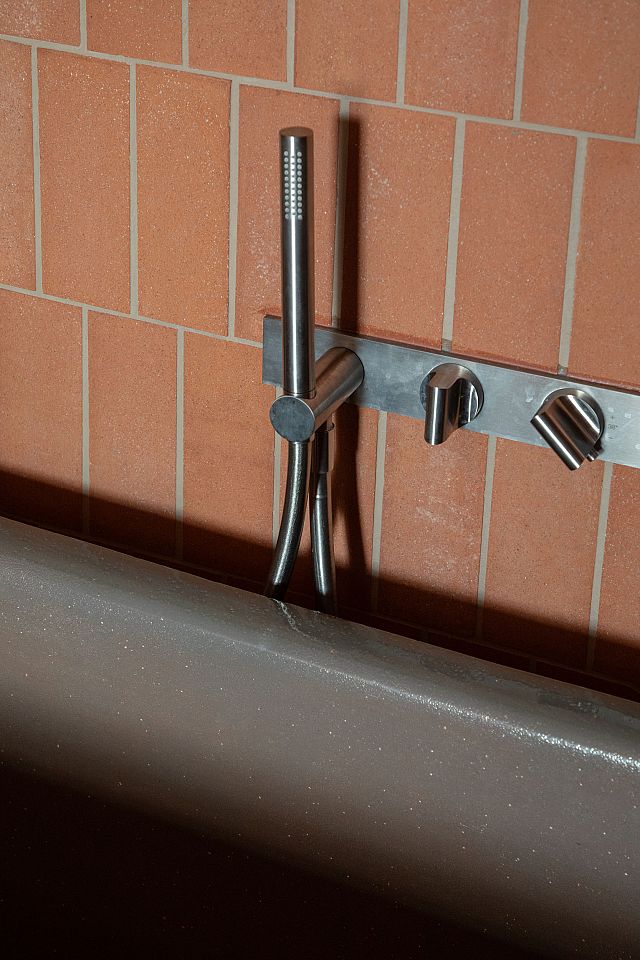
The story of Italian design continues throughout the bathrooms with the Agape Petra Basin, chosen by John in a Cementoskin finish, which is an enriched coloured concrete material. Designed by Marco Merendi and Diego Vencato, the Petra Basin allows water to naturally flow across its surface, which is gently inclined – as if like a stone: a beautiful meditative moment within the cosm of the beach house’s most intimate spaces.
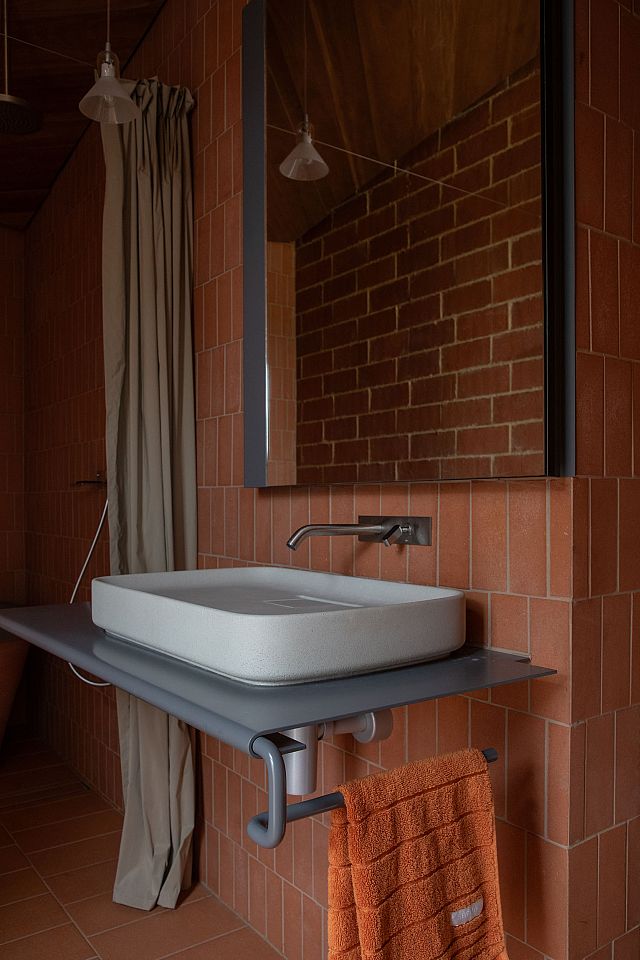

John also selected the Agape Mach 2 accessories, designed by the renowned German designer, Konstantin Grcic, with a bold, technical aesthetic. “There’s a primal quality to them, that I think, with what we’re trying to achieve with this house, is so good with them… the exposed screws and really simple folds. There’s something really very singular and very astute [about the design of them],” he says.


Back to the terracotta and John speaks of the “constant wrap” of terracotta tiles, especially in the bathroom spaces, where there is a subtle shift from the rustic Arrotato Da Crudo to the finer Satinato tile which comes up and around to the basin and mirror. “But otherwise, literally, that floor surface is climbing the walls to wrap everything. It works its way around a window and the walls … to really cover the entire space… It’s extraordinarily singular. You really feel like you are being immersed in this one warm earthen material.”
It’s a sentiment and feeling that extends out to encompass really every space within this remarkable house.

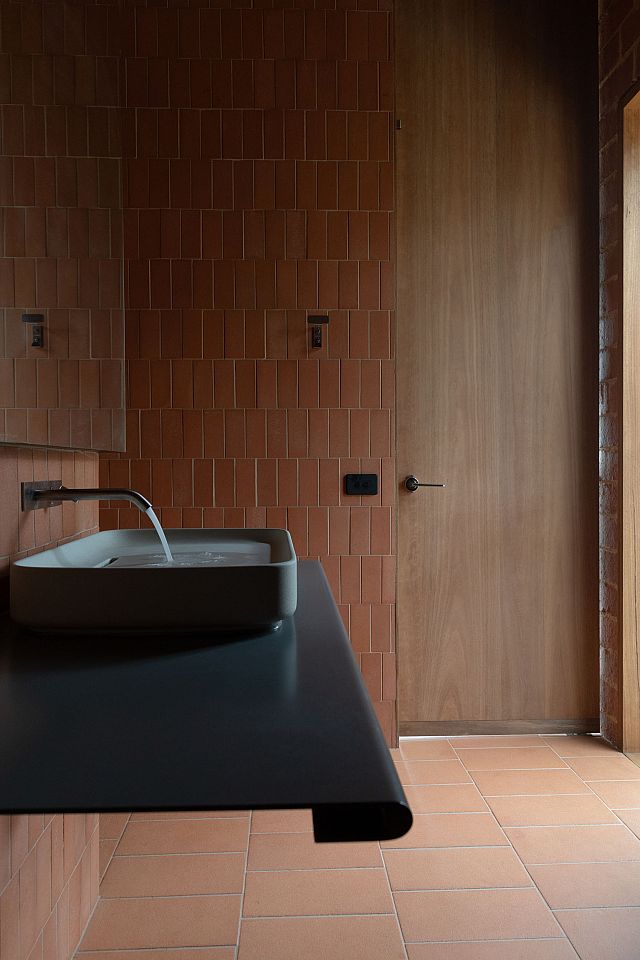
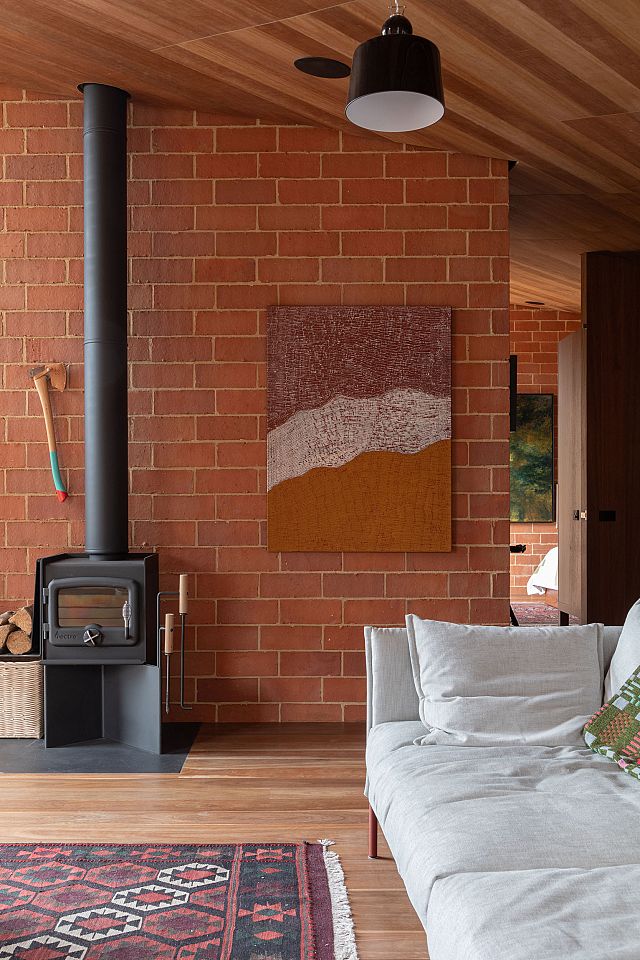

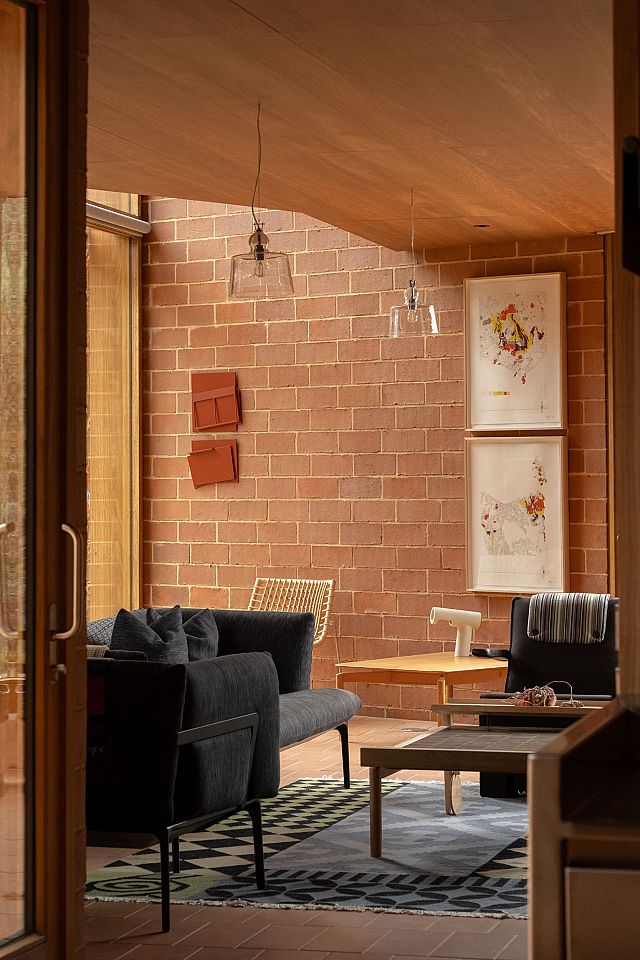
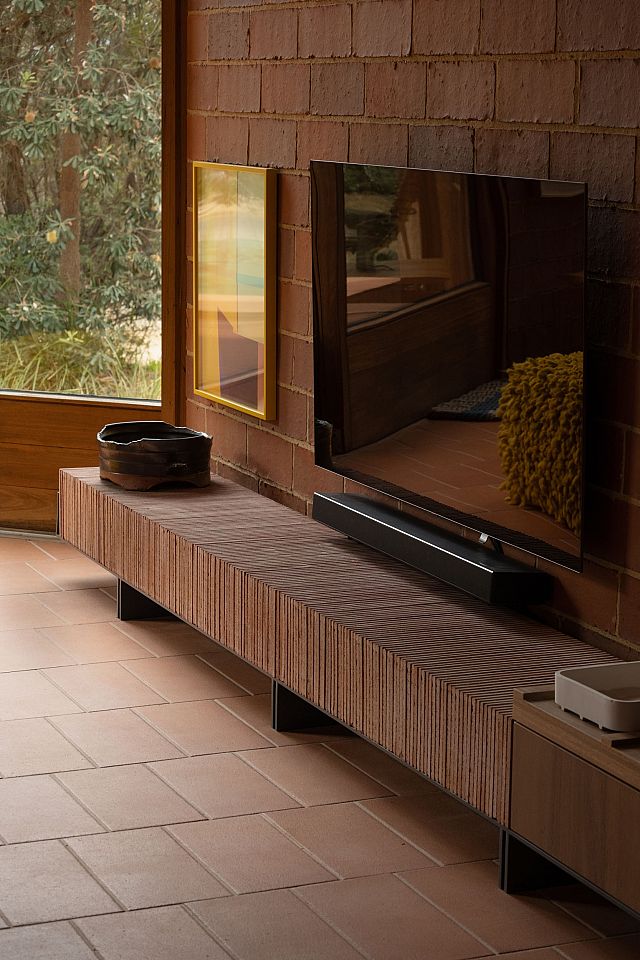
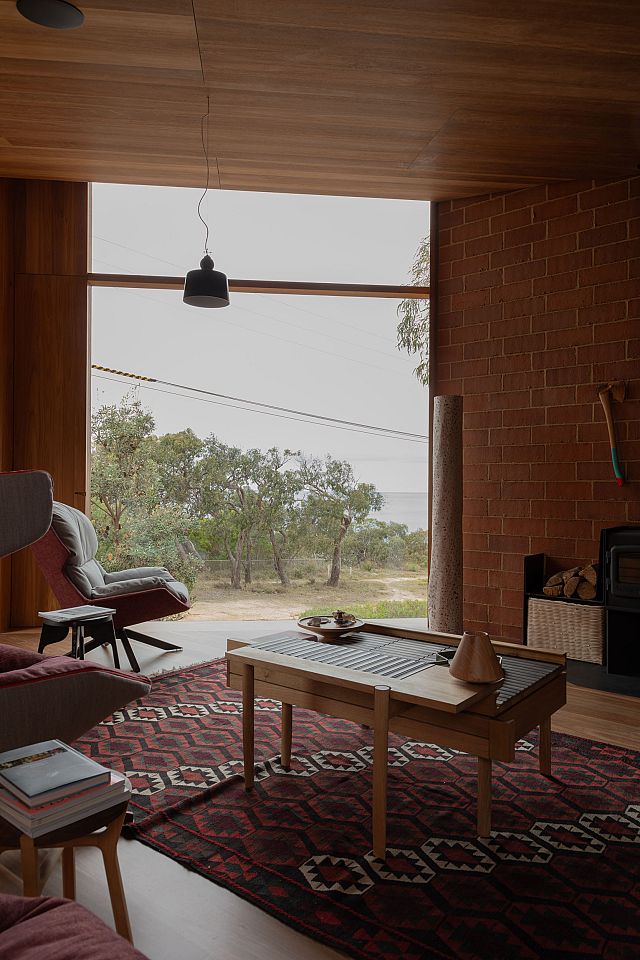
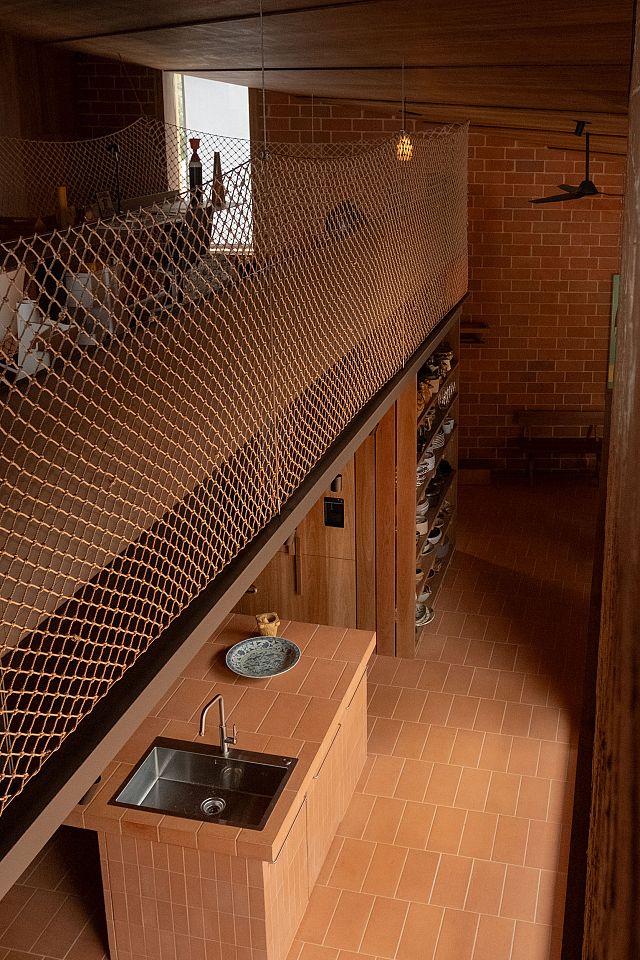
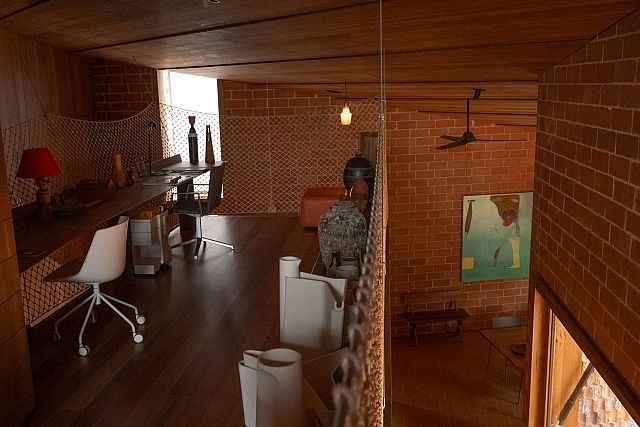

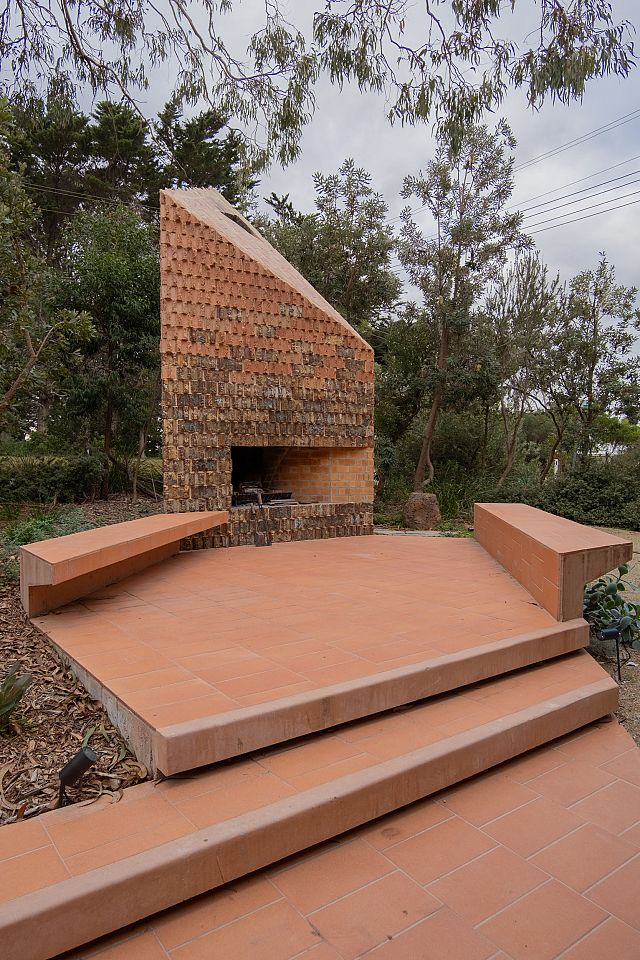

Love this project? Watch our In Conversation with John Wardle, captured at the Burnt Earth Beach House.
Words by Alice Blackwood
Photography by Joanne Ly
